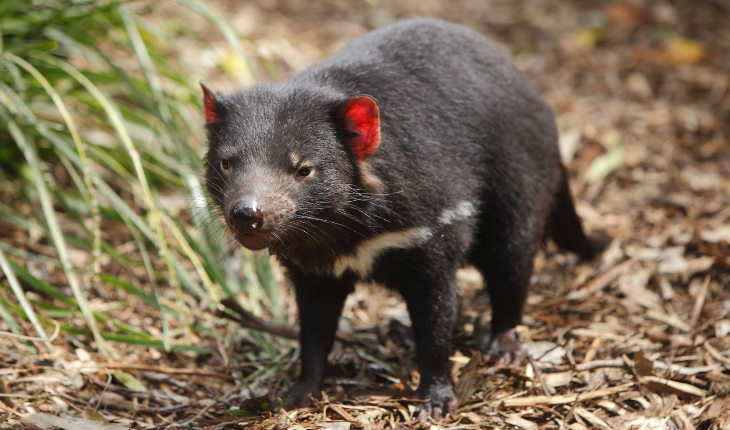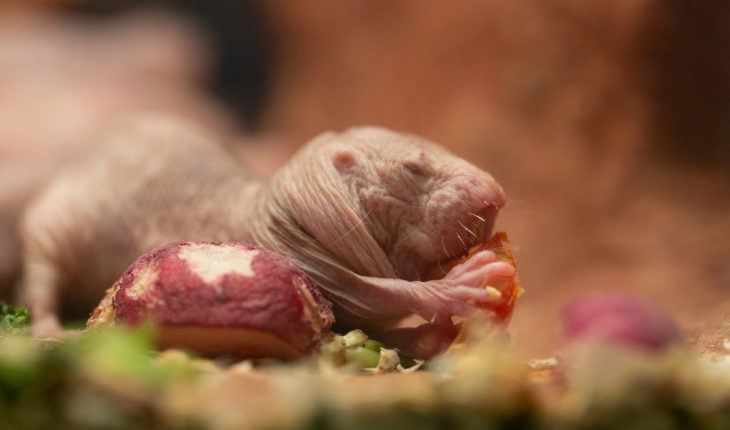What Makes Whales, Elephants, and Rats Immune to Cancer?
Cancer, as well as the human DNA and
genome, have been in constant ongoing research. Researchers keep on
discovering new rare types of cancer, but at the same rate, they develop
new, effective treatments, and for some cancers even vaccinations.
While some cancers remain lethal, for milk, a diagnosis no longer means a
death sentence. In this article, will discuss what we’ve learned about
cancer from the animal kingdom.
1. There are types of contagious cancer 

Clams, cockles, mussels, and other marine
mollusks can get a type of infectious cancer called neoplasia from the
seawater they live in. The cells of the disease flow freely through the
water and infect mollusks through their filter feeders. Unlike leukemia,
this disease is not caused by changes in the DNA of an individual. The
cancerous cells settle in the new host, divide and multiply, but how
they survive is still unknown. The disease causes the circulatory fluid
to thicken up, and clog up the tissue, which eventually leads to
inevitable death.
That is not the only type of transmissible cancer in the animal kingdom.
Apart from neoplasia, there are four more types of transmissible
cancers a mollusk can get, but neoplasia is the most common one.
2. Tasmanian devils were almost distinct due to cancer.


There are two different types of
transmissible cancer affecting the Tasmanian devils' population. Both
are facial tumors, passed when the Devils bite each other. Considered an
aggressive species, their behavior has caused the disease to spread out
fast. So much so, that it has pushed their population towards
extinction over the past 20 years.
The Devil Facial Tumor Disease was first discovered in Northeastern
Tasmania in 1996, and has since spread across 95% of the species range,
but now scientists are discovering that the animals' immune system has
modified to fight this disease by way of natural selection.
Cancer has never been past from animals to humans. It has also never
been transmissible in humans, apart for extremely rare cases- During
organ transplantation, experimental treatment, and a surgical accident,
as Sanger Institute states.
3. Evolution made whales immune to cancer.
Just like the Tasmanian devils are
gradually evolving to be able to fight cancer, bowhead whales have also
evolved to be immune to cancer.
Bowhead whales are one of the largest mammals on earth, growing to a
length of up to 65 feet, and weighing over 100 tons. They have 1000
times more cells in their bodies than we do, an estimate of 3.7
quadrillion cells. Having these many cells must put them in an even
larger risk of cancer than humans, about 1000 times more, right? But
bowhead whales are seemingly immune to cancer. They are the perfect
example of what’s called Peto's paradox: A lack of correlation between
body size and cancer risk. A possible solution to this paradox, as found
in a 2017 research, is evolution. The research suggests that
“super-human cancer suppression has evolved” to make these whales
essentially immune to cancer.
4. Elephants carry the Guardian of the genome


Elephants, like whales, consist of many
many cells and live a long life span, but like bowhead whales, they too
demonstrate a remarkable immunity to cancer.
While researchers are still in the speculation stage in regards to what
makes whales immune to cancer, the secret to elephants' immunity is out
in the open. They have 20 copies of a tumor suppressor gene, called the
Guardian of the Genome.
Humans also have that gene, but we only have just one copy, which is
mutated in 50% of all cancers. Elephants have a whole army of that gene,
and so they can handle cancer much more efficiently than we can.
Here’s how this gene works: it alters a cell metabolism in a way that
affects the cell's identity. Meaning, if you reestablish this gene in a
tumor, the tumor won’t go away but it will revert to a pre-cancerous
state. Scientists are still in search of the right way to do it.
5. Naked mole rats are resistant to cancer.


Mole rats rarely get cancer. The rare times
they do, they almost always survive. Blind mole rats have a protective
mechanism that eliminates the whole surrounding area of cancerous cells,
potentially killing cancer. The way their cells divide is also
potentially cancer-immune; their cells reproduce in a different way then
in most mammals.
We will try to explain in a simplified manner: most mammal tissues are
made of cells that are arranged tightly together to create a strong
barrier. Between each cell, is a viscous padding called hyaluronic acid.
But naked mole rats' tissues are nothing like that. Their cells do not
multiply as much as ours do. They are arranged much farther apart, so
that there is much more padding in between. This padding is much more
viscous than ours too, making it harder for cancer cells to divide and
spread within the rodents' bodies.
6. Humans share a rare cancer with dogs and horses
Mucosal melanoma is one of the rarest forms
of skin cancer, making up only 1% of diagnoses. As the name suggests,
it occurs in areas of the body coated in mucosal lining such as the
nose, mouth, sinuses, and genitals- areas that don’t see the sun, making
it difficult to diagnose.
With as few as 700 cases diagnosed a year in the US, there still isn’t
enough research about it and so the cause of mucosal melanoma remains
unknown.
What researchers do know is that this type of cancer is not unique to
humans. It’s seen across mammal species including dogs and horses.
Studies have shown that a handful of genes that are mutated in this form
of cancer repeat themselves in dogs and horses too. This information
may help narrow down the targets for new drugs, as well as more
research.